#70's sci fi westerns
Text
Skyfall is a good movie. Frankly, all the Daniel Craig bond films leading up to it were good movies. Pivoting from the 06 Casino Royale’s re-contextualization of spies in the post-9/11 geopolitical landscape, Skyfall is about the consequences of the wars we fought before and the mistakes that came back to haunt us following the actions we took in those wars.
Skyfall was released in 2012, 11 years after the twin towers fell and 9 years after the 03 invasion of Iraq. We’d killed Bin Laden and now had to deal with ISIL, who’d not yet bombed the Ariana Grande concert but had at this point grown in power as a result of the US invasion in 03. Setting up the villain of the film (and his horrific disfigurement) as directly the result of MI6 decisionmaking only for him to come back and blow up MI6′s iconic HQ is evidence enough that Skyfall is a retrospective on a decade of war on terror that seems to have done nothing.
There are no better ways to show how tired and old Bond (and the empire he represents) is than to have him fail his fitness tests while in Winston Churchill’s old bunker. A waning icon of a waning empire in the decrepit remains of said empire. It’s a perfect exploration of the intersection of postcolonialism and the war on terror.
Given that the last Daniel Craig film I’d seen before starting Skyfall was Glass Onion, I watched Skyfall with the “I’m so glad that Craig stopped playing Bond so that now he can dress in sweaters in fun movies” criticisms in mind and frankly, I found they fell flat. For one thing, Bond does wear sweaters in this (very fun!) movie (as well as a cute blue adidas tracksuit with matching shoes!), but on top of that I’m starting to realize this criticism of the modern bond franchise (and other films like these) comes from the sort of people who still use the word “grimdark” for their media criticism. Just like those who unironically use “dudebro,” their contributions to serious discussion are limited. Doubly so for Skyfall because this movie is fantastic and balances tone elegantly.
I will admit that Skyfall takes a serious tone when addressing things like “the fall of the 20th century western imperialist old guard” and “thematic explorations of the war on terror and the mistakes of those gambling with the lives of millions” (If you were to try and write those into something finally similar to Trolls 2 it’d be difficult though not impossible) but I will argue that the movie is still self aware enough to understand itself as a pulpy adventure film.
This isn’t Moonraker or anything, but Skyfall is self aware enough to know what beats to hit. The villain monologues and then challenges Bond to a flintlock pistol shooting match. They keep the main bad guy in a dorky sci-fi glass prison cell. The action finale has goons (did I mention that there are goons?) showing up in a helicopter to attack a castle. They even pull the old DB5 out of mothballs so Bond can threaten the ejection seat trick. Bond fights off an evil lizard in a casino at one point. Imagine the movie in 60s Technicolor and the bones of the plot are just as camp as Goldfinger.
The movie is clearly self-aware and plays into the campier story conventions of a genre the franchise it belongs to basically started. It just doesn’t have characters shrug and go “*gulp* he’s behind me isn’t he?” Instead of lampshading the more ridiculous aspects of pulp characters from the 60s and 70s, Skyfall is so darn earnest about how cool these are. It’s self aware yet charming in its seriousness! (Jots down “James Bond Skyfall = Solarpunk?” into margin of notebook and is never heard from again)
Movies like Captain Marvel can’t say the same, and only half of that is because you can’t write a critique of Bush and Obama era imperialism while also shilling for the USAF. It’s because they can’t be serious in their ridiculousness that they end up being less campy (ashamed of truly trying) and less adult (too silly to take seriously) and ultimately less fun than movies like Skyfall.
That’s ultimately what Skyfall is. A Pulpy country-hopping spy flick about modern spies operating in shadows that are getting more cynical with every conflict. It’s not Dr. No but it’s immense fun that explores themes few other franchises are tackling these days. That’s worth a lot more than whatever Ryan Reynolds/The Rock spy film is dealing these days. And Daniel Craig got to wear a dark powder blue tracksuit too.
38 notes
·
View notes
Note
Hello! Could you please recommend some retro anime(s)? What are your favorite ones?
Hi!! Sorry for my late response. Everyone has a different definition of "retro" but I'll just take it to mean pre-21st century.
urusei yatsura (1981): never was there an anime so uncategorizable yet so accessible. it's a blend of slapstick comedy, sci-fi, japanese mythology and romance involving the unlucky life of a teenage boy, his classmates, and the aliens that come to their town (who are mostly beautiful women). for all its silliness, a more sophisticated comedy than one might expect.
the rose of versailles (1979): regardless of your interest levels in historical fiction, the rose of versailles is compelling and subversive. it follows the fictitious bodyguard of marie antoinette, lady oscar (a woman raised as a man so she could join the royal guard), her childhood best friend andré grandier, and the queen's lover hans axel von fersen and the way destiny binds them together and tears them apart. it's also about class struggle and revolution. both a great read and a great watch to this day.
akage no anne (1979): this is an anime series adaptation of anne of green gables done by isao takahata (later of studio ghibli fame). even if you've never read the book, which it adapts with remarkable accuracy and grace, it's one of the best-directed anime i've ever seen. you will really feel like a part of avonlea with how much thoughtful time we spend getting to know its locals and scenic places. i miss watching it every morning with my breakfast.
candy candy (1976): this is a bit harder to find especially because due to a copyright conundrum there are no official dvd releases of this show, even in japan (also i admittedly have only finished the manga and watched ~40 episodes of the anime). definitely informed by early 20th century western literary works like anne of green gables^, little women, etc, we follow a tomboyish orphan and the gutsy optimism that carries her though life in the face of grand tragedies. you'll be gripping your handkerchief, trust me it's worth it to find a crappy taped-from-tv copy.
chibi maruko-chan (1990): this anime is ongoing in a separate iteration, but i've only really watched the 1990 series, and it's terrific. it's very episodic and slice of life in nature so you can watch however much you want. loosely based on author sakura momoko's childhood in the 70's, maruko is one of the most comically realistic children i've ever seen in fiction, and the show is thoroughly entertaining, sometimes laugh out loud funny and sincerely heartwarming for anyone of any age.
14 notes
·
View notes
Photo


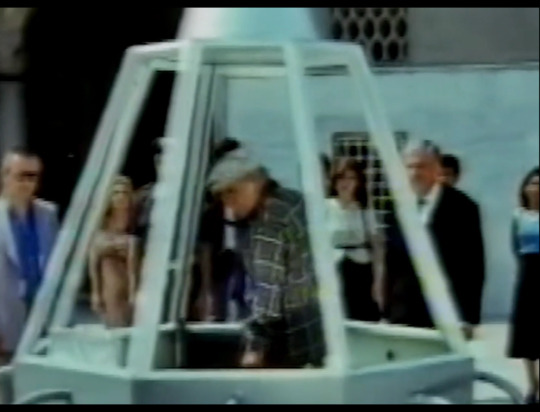
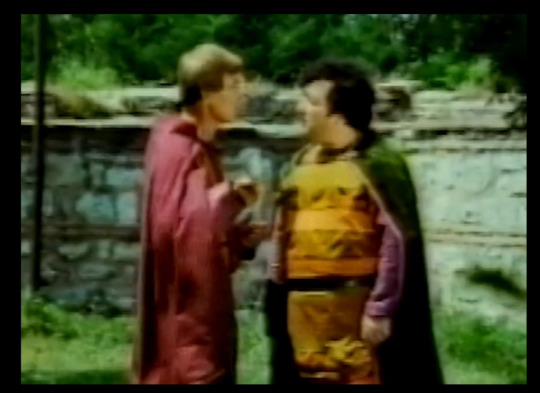

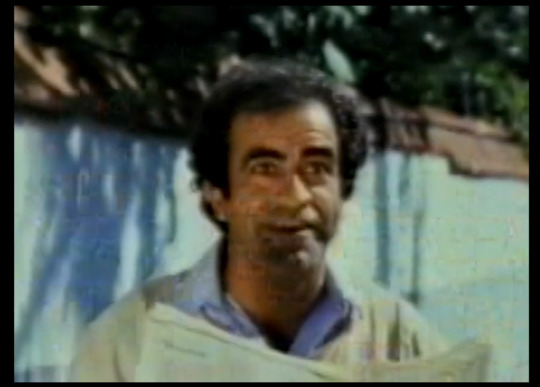

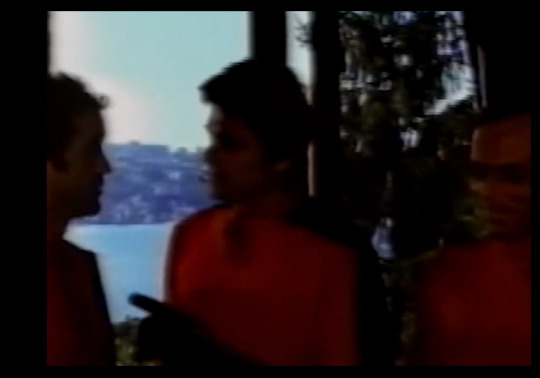


Three Supermen Against the Godfather (1979)
Film review #549
Director: Italo Martinenghi
SYNOPSIS: A scientist has invented a time machine, and uses it to travel back in time in Turkey to the fall of Constantinople, to learn the location of the treasure hidden before the city was sacked. The two thieves known as the supermen learn of this, and decide to try and take the time machine for themselves. But they’re not the only ones interested in it, as an Italian mafia boss, foreign powers, and once again, FBI agent Brad is sent to work with the supermen (against his will) to secure the time machine and protect the inventor...
THOUGHTS/ANALYSIS: Three Superman Against the Godfather (released as Süpermenler in Turkey) is a 1979 film and another instalment of the Three Supermen series of films. This time, the supermen are after a time machine invented by a scientist (not the same one who invented a similar time machine in Three Supermen in the West, of which there is no mention), with the aim of going back to the fall of Constantinople in the fifteenth century, to find out where the royal treasure was buried before it was lost. The two international thieves known as the supermen learn about the machine and decide they want to steal it for themselves, but an Italian mafia boss and some foreign powers are also after the device and the professor; and as always, FBI agent Brad (or whatever his name is this time) is sent by the U.S. to secure the professor and the machine himself, and is ordered to cooperate with the supermen, which he is reluctant to do because of the constant shenanigans he gets caught up in whenever he meets them. The film feels like a return to the classic formula of the films; after the Hong Kong co-production Supermen Against the Orient, which was more of a typical martial arts film that substituted the classic acrobatics with said martial arts, and also messed up what little continuity the series had. While it is a return, it should also be noted that this “original formula” was itself all over the place: some films were science-fiction based others were parodies of spy films, westerns, and so on. With this one, it’s obviously riffing on The Godfather and mafia films, and the sci-fi element of time travel doesn’t really factor into the film at all: they only travel once in the beginning to demonstrate that it works.
As always with the Three Supermen films, the main actors have a bit of a shake up, with only Sal Borgese as the mute superman keeping his role as he has through most of these films. To make things even more confusing this time, Aldo Canti, who played one of the supermen in the first film, returns to the series, but he is instead playing the role of the FBI agent this time, with the other role going to prolific Turkish actor Cüneyt Arkın. The choice of actors doesn’t really make too much of a difference, as their characters aren’t too developed in any particular way, but it’s just interesting to follow this revolving door of casting. The reason for Arkin’s casting is because the film’s production has moved from Italy to Turkey, and I guess his casting would have some appeal to the local market.
The reason for the move from Italy to Turkey is fairly interesting: Italian media became more focused on television, and moved away from cinema in the mid-late 70′s. As such, there was an exodus of sorts of Italian filmmakers to Turkey, where their type of cinema was still more popular. Nevertheless, it would seem this film was hardly released to any cinemas at all, and is probably the most difficult to get a hold of in the franchise. While the film does have the usual slapstick moments, scantily-clad women, and some stunts, we don’t get the typical acrobatics we usually do, probably because the newer cast aren’t actually acrobats, and the older cast probably can’t pull the feats off anymore (remember that this franchise would have been twelve years old in 1979). Overall, Three Supermen Against The Godfather is, for better, or worse, a return to the typical Three Supermen formula that is full of a heap of different ideas and directions that don’t really cohere, but it’s still just a bit of silly fun.
#movie#movie review#three supermen against the godfather#supermenler#three supermen#film#film review#1979 film
11 notes
·
View notes
Text
The Mosley Review: Nope

Very few storytellers have the option or ability to delve into different genres while keeping one foot planted in the first genre they started in and still make it intriguing to watch. This storyteller has done that and in my opinion, his films have finally led to this and it didn't disappoint. The amount of social commentary about the film industry, animal cruelty and profiting off of childhood trauma is ever present in the film. What I really enjoyed is that this wasn't a horror film like the past films. This was a sci-fi western that was more in line with a thriller. Now I did find that the most interesting parts of the film were when you're dealing with the main antagonist and I loved that details about it were slowly revealed. There were some truly great creepy moments, but one in particular made me lean back in my seat. The problem I had with the film as a whole is that there is a lack of the subtlety the director is known for. Even though it was a take on a real life tragedy, there's a plotline that I felt wasn't really necessary in the long run.
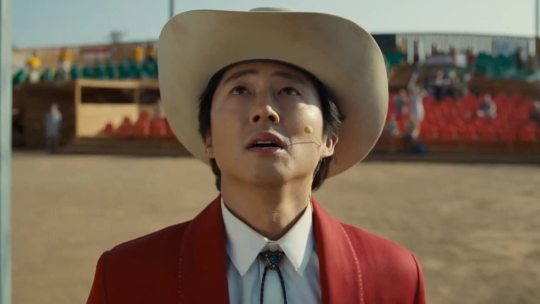
Daniel Kaluuya leads the film as the stoic horse wrangler OJ Haywood. He was great as you'd expect, but at times it was a little tough to understand him as he would mumble a few times in his monotone voice. Keke Palmer was fantastic and the energy of the film as OJ's sister Emerald. The moment she slides into frame, she steals the scenery and acts as the perfect counter balance to OJ. Daniel and Keke have the best chemistry in the film and I truly believed they were siblings in the way they would bounce off each other. Steven Yeun was excellent as the neighboring "Jupiter's Claim" amusement park owner Ricky "Jupe" Park. He was charismatic, fun and there is a deeper story for his character that illustrates one of the central themes of the film. It was good, but was better told than shown. Brandon Perea was awesome as the Fry's Electronics employee Angel Torres. He was hilarious, and perfectly eccentric as things started happening. Michael Wincott was great and cantankerous as a famous cinematographer, Antlers Holst. I liked that even though we don't spend that much time with him, we understood his mission in life.
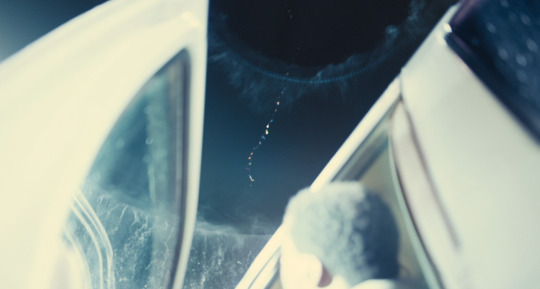
The score by Michael Abels was eerie, fun and I loved the infusion of classic western sounds toward the last half of the film. The main problem I had with the film is that there is a plotline that has to do with Hollywood exploitation of animals that was good and violent, but felt like it was blocking the momentum of the film. It plays into the overall plot for a certain character, but in the end it felt included for more shock value than story progression. Visually the alien ship was stunning and very reminiscent of classic 70's B movies with a fun twist. In the end, I thought the film was good, but not as great as it could've been. It was just a middle of the road sci-fi thriller that has plenty of creepy visuals and a fun finale. Let me know what you thought of the film or my review in the comments below. Thanks for reading!
4 notes
·
View notes
Text
Y’a know, I’m bored at work so here’s a post with all of the outfits I’ve designed for my DnD character Stardust Susie, and my thoughts on them:
Whenever I design an outfit change for Susie, I always have specific elements I keep consistent, as they are hallmarks of her character and aesthetic: There always needs to be star motifs, she always has to have a burglar-style eye cover, she always has twin pigtails, she always has her big red hat
Her outfits always need to have old western desperado elements to them, but sort of an over the top runway-esque twist to them, as her desperado nature and manners are more of a performance to her rather than a way she actually grew up
Outfits and my thoughts below the cut
The first outfit:
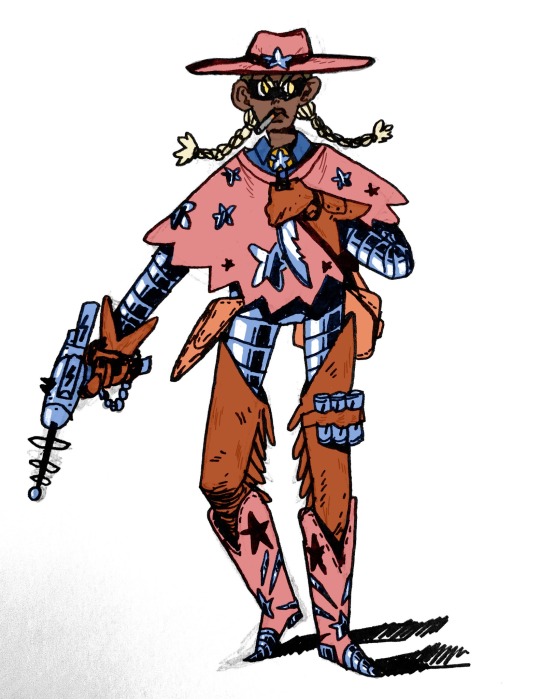
Susie’s campaign start outfit is still one of my favorites. It’s a wonderful mix of desperado and 70’s chrome sci-fi. This was drawn traditionally and colored digitally. This was before I started implementing more gold rather than silver into her outfits, and I think the cool tones of the chrome worked beautifully with the warmer earth tones of the desperado elements
Her second outfit:

For her second outfit, I wanted to attempt to find it back a bit. This was still when I was figuring out the level of flashiness, cockiness, and performativeness I wanted her to engage in. This is definitely one of my least favorite outfits I put her in. This was drawn in inks then colored digitally
The third outfit:
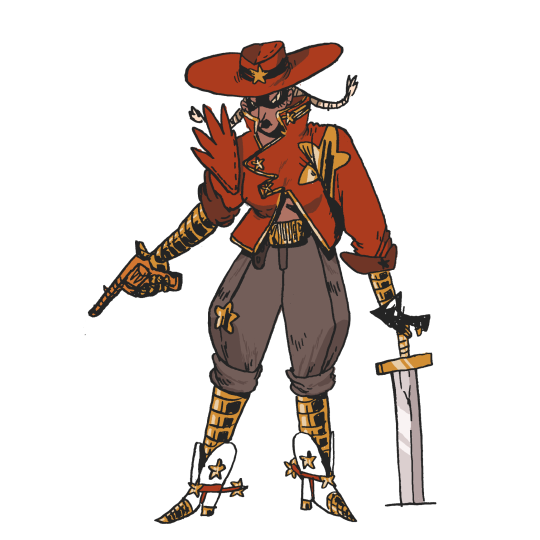
The third outfit I designed for her is another of my favorites! This one I looked at way more inspiration in high fashion but still wanted to keep a level of practicality to it. I decided to start implementing more gold into her outfits to put more emphasis on her flashiness and cockiness. This piece was done entirely digitally
The fourth outfit:

Her fourth outfit is a good one as well I think! I wanted to increase the amount of gold, and I also wanted to increase the amount of exposed skin to reflect the increasing feeling of comfort and exposure she began feeling with the party after traveling with them for a few months.
Her current outfit:
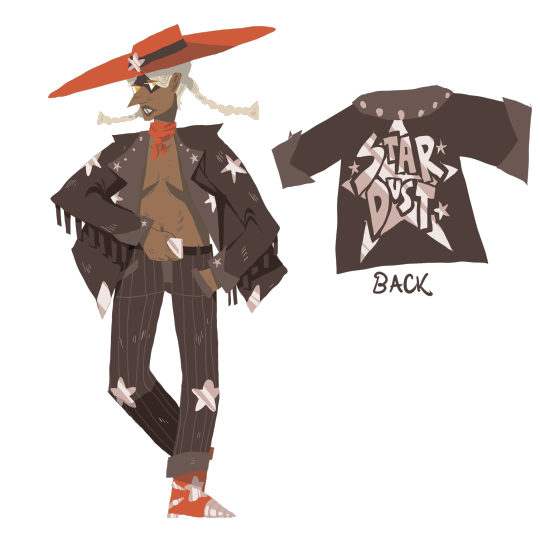
Her current outfit is by far the most different one comparatively. At this point her past is coming back to haunt her, and her true identity is starting to come to light, not just to the party but to her enemies as well. This drastic outfit difference is supposed to reflect her desire of being in the spotlight starting to wane since now it’s biting her in the ass. She’s still confident and cocky, but now that things are starting to become riskier, she’s dialing back the flashiness and starting to become more serious
That’s everything so far! I design new outfits for her like once a month or two just about, so I’ll update this post with every new outfit I design for her, I think that’d be fun! If you read this whole thing: thank you you’re a baller and I appreciate you and love you!
#illustration#black artist#character design#my artwrok#dungeons and drawings#dnd oc#dnd character#dnd art#space cowgirl#ttrpg character#ttrpg stuff
0 notes
Text
Check This: Mobley - Lord
Check This: @mobleywho - Lord
Innovative multi-talented artist blazes thru 70's sci-fi inspired track from new EP
@mnrkmusic #newmusic #indie #alternative #altrock #altpop #musicvideo #interactive #lord #mobley #cryhavoc #scifi
Artist: Mobley
Song: “Lord”
Album: “Cry Havoc” EP
Label: Last Gang Records Inc/ MNRK Music Group
Genre: Alternative, Rock, Alt Pop
Mobley is so much more than just a musician. The songwriter and multi-instrumentalist is also a filmmaker, coder and advocate, braving new frontiers with his music and releases. He draws influences from Spaghetti Westerns and 70’s sci-fi paperbacks (which were a…

View On WordPress
0 notes
Text
Raquel Welch, the big-screen star of the 1960s and ’70s who gained fame in movies including Fantastic Voyage, One Million Years B.C., Myra Breckinridge, and many others, died today after a brief illness was confirmed by her reps at Media 4 Management.
Welch’s career spanned more than 50 years, 30 films, and scores of TV series and appearances, including about a dozen visits to The Tonight Show Starring Johnny Carson spanning two decades and a Lifetime Achievement Award from the Imagen Foundation in 2001.
Born Jo Raquel Tejada on September 5, 1940, in Chicago, Welch's family moved to San Diego when she was a toddler on a theatre arts scholarship, and she began her career as a local TV weathercaster before landing guest shots on classic TV series such as McHale's Navy, Bewitched, The Virginian, and others, including Cora in the wild 1966 sci-fi film Fantastic Voyage, which also starred Stephen Boyd and Edmund Gwenn and only had an hour before they returned.
The film won Oscars for its visual effects, art direction, and set decoration and became a cult classic with a 91% Fresh rating on Rotten Tomatoes.
Welch then starred as a clan cavewoman in the 1966 British film One Million Years B.C., another wild tale set in a time when humans and dinosaurs coexisted; a slightly censored version of the film was released in the United States, and the film became a TV staple in later years, inspiring her to star with Dudley Moore and Peter Cook in the London-set 1967 comedy Bedazzled and opposite James Stewart, Dean Martin, and George Kennedy in the 1968 western Bandoler.
Welch continued her big-screen career alongside some of the era's biggest stars, including Burt Reynolds in the 1972 cop comedy Fuzz, Richard Burton in Bluebeard the same year, and James Coburn, Richard Benjamin, and others in Herbert Ross' The Last of Sheila, written by Stephen Sondheim and Anthony Perkins and starring Richard Chamberlain, Oliver Reed, and Michael York in 1973.
That film earned Welch a Golden Globe Award for Best Actress in a Comedy or Musical, and it spawned a 1974 sequel, The Four Musketeers: Milady's Revenge. She also appeared in the 1976 ambulance-crew comedy Mother, Jugs & Speed, alongside Bill Cosby and Harvey Keitel; her other films from the era were Kansas City Bomber, a 1972 drama set in the then-popular world of roller derby; The Beloved (1971); and the western Hannie Caulder, which she co-starred in with Robert Culp and Ernest Borgnine.
Welch was never shy about fighting for herself and her place at the Hollywood table. In that context, she made a very different set of headlines in the 1980s when she sued MGM over being dumped from starring with Nick Nolte in Cannery Row to play an empathetic prostitute in the David S. Ward-helmed movie based on the work of John Steinbeck. Welch was booted off the project by the studio over a contract violation in which she insisted on having her hair and makeup done there.
MGM said no and replaced Welch with Debra Winger to make peace by taking another role, but after being rebuffed by the studio, then run by David Begelman, Welch hit back and sued MGM for $24 million.
Making headlines all over the world, Welch alleged in her suit that the studio had built the movie and its financing around her and then used the hair-and-makeup dispute as a way to get a younger actress in the hooker role through the courts and appeals, but Welch ultimately was awarded a $10 million verdict in 1987, which, of course, generated a whole new set of headlines for her.
By the late 1970s, Welch's film career had peaked, and she began doing more TV work in 1979, appearing in a couple of Season 2 Mork & Mindy episodes with Robin Williams, and she continued to appear in telefilms throughout the decade, including the title role in "The Legend of Walks Far Woman," a 1982 NBC telepic about a woman who murders her abusive husband, and the role of a successful woman whose husband is murdered.
She later did a memorable cameo as herself in 1994's Naked Gun 33 1/3: The Final Insult, wrestling Leslie Nielsen's Lt. Frank Drebin onstage at the Oscars, and briefly appeared as Mrs. Windham-Vandermark herself in the classic 1997 Seinfeld episode "The Summer of George," which featured the actress mistakenly presenting a Tony Award to Michael Richards' Kramer, with unexpected repercussions.
Other 1990s TV guest roles included Evening Shade (reuniting with Reynolds), Sabrina the Teenage Witch, Lois & Clark, and multiple episodes of Spin City and C.P.W. Her small-screen credits since then include a recurring role on the 2002 PBS series American Family, which starred Edward James Olmos and Sonia Braga, along with 8 Simple Rules, CSI: Miami, the telefilm House of Versace, the short-lived CBS sitcom Welcome to the Captain, the Canadian comedy Date My Dad, and her career, Welch appeared on scores of TV talk, game, and awards show; hosted Saturday Night Live during its first season in 1976; was a presenter at multiple Academy Awards and Tony Awards ceremonies; appeared on Bob Hope comedy specials and toplined her own specials; in 1970, 1974, and the 1980 CBS special Raquel! showcased Welch’s comedy, dancing, and singing skills, earning a 51% share.
She also was a guest on The Late Show with David Letterman, The Tonight Show with Jay Leno, The Late Late Show with Craig Ferguson, and talk or variety shows hosted by Oprah Winfrey, Craig Ferguson, Bonnie Hunt, Dick Cavett, Mike Douglas, Joey Bishop, Dean Martin, Merv Griffin, and others twice on Broadway: the first time in 1981, when she filled in for a vacationing Lauren Bacall in Woman of the Year 1997, and the second time in 1997, when she played the lead role of Victoria Grant in Victor/Victoria, replacing original star Julie Andrews.
Despite her Golden Globes win and nomination, Welch never earned an Oscar or Emmy nomination during her long career; other accolades include an ALMA Award in 2001, a Western Heritage Award for The Legend of Walks Far Woman, and a star on the Hollywood Walk of Fame in 1996 by her son, Damon Welch, and daughter, Tahnee Welch.
0 notes
Photo

#Illustration#illustration design#shapes#colour and light#sci fi#science fiction#70's sci fi#western#space#space western#Environment#environment design#sundial#view#contemplation#mountains
90 notes
·
View notes
Text
Animation Night 103: Toshiki Hirano
Hi friends! It’s a Thursday, and I hope you know what that means by now~
Next week: the two year anniversary of Animation Night! I’m aiming to get a commenting system up on my blog by then and do some of the cleanup tasks for the Animation Night archive.
Now, you like Animation Night and want it (and various other creative projects) to continue, please forgive me for humbly passing around the Patreon hat. The next week or two I’m going to be working on illustrating, and then releasing, a certain RPG setting with all sorts of things I like such as jelly alchemists, weird gender shit, and early-modern body horror, and I’ll be keeping you posted on there.
Anyway, on to this week’s event: lesbian apocalyptic sci-fi mecha OVAs from the 1980s.
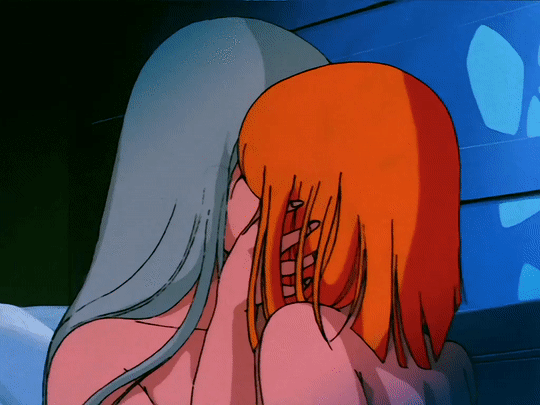
Tonight on Animation Night, I have two of the earliest ‘big’ OVAs, back from when the new format was still an open question, which both became cult classics: Megazone 23 and Fight! Iczer One. And this writeup, I’m indebted to Youtube user MercuryFalcon, who put together a 30-minute video about Iczer-1’s production, and even more so the blog aaltomies, who wrote this impressively detailed retrospective.
We’ll begin with the erotic manga magazine Lemon People, which I believe I first talked about back on Animation Night 69 (now in its proper place in the Animation Night archive!), and the mangaka Rei Aran (阿乱 霊). Despite the long shadow that Lemon People’s work cast over the evolution of anime and manga styles, and Aran being active at their strongest period, Aran remains barely known outside of his work on Iczer One. Aaltomies writes that Aran was prone to overworking, and as a consequence, most of his works - including Fight! Iczer-1 and Galaxy Police Patrizer-3 (the latter running from 1983 to 1993).
You can see some of Aran’s work at the link above. He was a self-taught artist, working his way up through dōjin groups before submitting work to Lemon People at the suggestion of his friend Hariken Ryu. but here’s a cover he drew for the issue of Lemon People in which Iczer 1 debuted:

The jump to OVA came via Hariken Ryu’s college friend, Toshihiro Hirano (who’d later change his first name to Toshiki), who in 1982 had been working on Macross (Animation Night 64). Having yakked sufficent de culture, Ryu, Hirano and many Macross animators announced in ‘83 they would adapt Ryu’s 1982 manga Gekisatsu Uchuken (Space Punch) for TV, but it fell through. Meeting Aran, Hirano instead started talking about adapting Iczer, perhaps as one of these new-fangled OVAs...
The OVA format was still very new in 1985, and even in the bubble economy (c.f. Animation Night 34). The ball was supposed to start rolling Mamoru Oshii’s Dallos (1983), but when it flopped, the idea was postponed and Hirano went to work on other projects like Megazone 23 (1985). Planned as a 12-episode TV anime, funding was pulled and Megazone came out instead as an OVA, where in contrast to Dallos, it proved wildly successful. Suddenly adapting Iczer was back on the table for AIC, who gave Hirano the choice of what to adapt; he chose Iczer, and the first episode released that very same year.
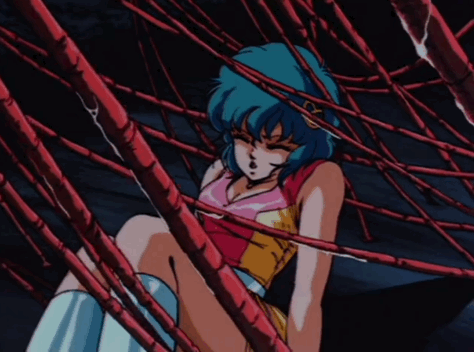
Hirano is one of the major sources of the look of 80s anime, and yet he was slow to come around to the medium. (Drawing now on another retrospective on him here). Born in the 50s, Hirano was initially dismissive of anime, seeing it as inferior to his beloved manga; he changed his mind after seeing Toei’s The Little Prince and the Eight-Headed Dragon (わんぱく王子の大蛇退治, Wanpaku Ōji no Orochi Taiji, 1963), which was I suppose you could say his sakuga awakening, but his biggest passion was tokusatsu, particularly Tōhō’s kaiju movies and TV series like Ultra Q and Ultraman. His interests drifted to Western movies, but he was pulled back in high school by the 70s era of tokusatsu (notably the original Kamen Rider) and early robot anime such as Mazinger Z.
This waxing and waning interest continued as he went to Tokyo Designer Gakuin College, falling in with a group of future mangaka including Hariken Ryu who shared his love for robots and toku. Still, it wasn’t as if he then ran straight for anime; he took a part-time job at Toei at university, drawing inbetweens for none other than Yoshinori Kanada (see Animation Night 62); he only gradually came around to working full-time at Toei.
As such, he is an artist whose passions are very straightforward: he wants to make stuff with the same feeling as tokusatsu; he likes drawing robots, superheroes, monsters and women he finds beautiful. He got his start at Toei only to find to his immense disappointment that he’d instead be working on a 200-episode historical series Ikiyu-san about a young Buddhist monk, which ran from ‘75 to ‘82. He absolutely hated the ~8 months he worked on this series, only finding relief drawing robots for Televi-kun magazine. Eventually he escaped to draw nigen [2nd key animation, aka tiedowns] of cars for a racing show Arrow Emblem: Hawk of the Grand Prix (1977) directed by Rintaro, which proved much more to his taste. This led him directly to work on Captain Harlock, drawing nigen for two episodes, particularly proud of his illustrations of the women antagonists in each. (Not sure if the following is one of Hirano’s...)
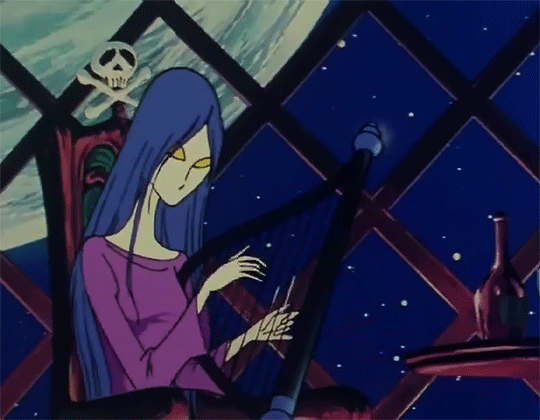
Next came inbetween checking on Farewell to Space Battleship Yamato (1978) - it’s notable that here Toei were already outsourcing douga (cleanup and inbetweens) to South Korea, and Hirano’s job here was to fix those drawings or even fully redraw scenes that weren’t up to standard. This is where we can join (drink) Matteo Watzky’s account of the period here, as Hirano finally left Toei to found studio Beebow with Tomonori Kogawa, working as a subcontractor mainly for Sunrise, particularly on Space Runaway Ideon (see: Animation Night 88). There, we started to see some real breakthroughs in drawing characters with solid 3D form; Watzky points to this cut from the Ideon followup film Be Invoked.
Following this, Hirano launched another new studio, called Io, and it’s here his work on Macross takes place. Hirano was very frustrated with the corners the anime had to cut, but here he started rising to prominence for his animation of Linn Minmay, off the back of which he became one of the animation directors for the Macross film Do You Remember Love (Animation Night 64), made an episode director debut in the foundational ero-anime series Cream Lemon (Animation Night 69). DYRL was followed for the Macross team by Megazone 23, pitched as a sci-fi series Omega City 23 that ended up awkwardly compressed into an OVA film after a troubled production, yet this all found unexpected success on the sheer strength of the animation and style - much of that being Hirano’s character designs. (Notably, this film also featured the key animation work of Hideaki Anno.) Which brings us back up to Iczer One...
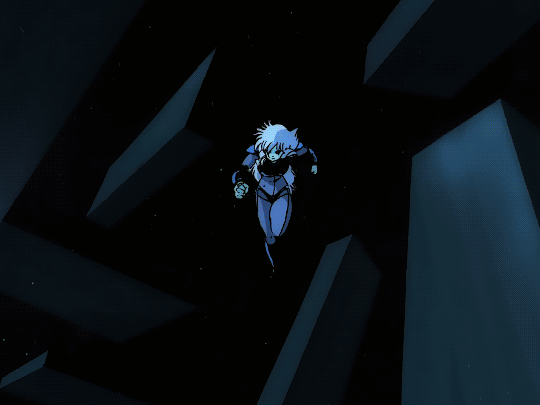
So what’s it about? We’ll start with Iczer One. Let’s put it this way: in 1983, throwing around the word Cthulhu wasn’t nearly so stale as it is today. It’s packed full of indulgent ideas and things that someone like Hirano would like: women, robots, body horror... and he made it even more so, making it much more lesbian centric. As not just the director but also the character designer
The story begins with a catgirl called Iczer-One - this is a catgirl of the classical anime big hair mode - who wishes to fight aliens called the Cthulhu (no relation, I think) who are attempting to take over the Earth by implanting mind control parasites. When Iczer foils this plan, they escalate to full-on military invasion. To fight back, Iczer needs a suitable ‘synchronisation partner’ to pilot her mecha... which she finds in a Japanese schoolgirl called Nagisa. The battle against the aliens rapidly escalates, destroying much of the planet that Iczer wished to defend.
And Megazone 23? It’s set in a far-future city deep in space, locked in a war with a rival megazone. The government of the eponymous Megazone 23 launch a plan to hack the city’s governing AI, EVE, and force it to participate in the war. In the midst of this is Shōgo Yahagi, who gets pulled into a complicated intrigue which reveals that, surprisingly enough, the government is full of lies and his world is some kind of simulation. The first two parts of the OVA series, released in 1985 and 86, tell the story of what happens to Shōgo, while the third, released in 1989 under the direction of Ichiro Itano (yep! the missile circus guy!), takes place after a centuries long time skip during which time Shōgo has undergone a serious heel turn. whoops, I got this mixed up: Itano directed the second episode in 86, and actually that’s a really interesting story in its own right which I’ll address in a followup post!
The animation is absolutely spectacular: you can totally see that this is the same team that made Macross DYRL, and it’s full of the ideas of the Kanada school taken to an absurd level of polish - like just look at this background animation, how??

I will admit, these are absolutely on the more indulgent end of OVAs and probably not going to offer deep meditations on the human condition, but they’re also a fantastic window into a period when the craft of animation was going through some seriously rapid development. It really is hard to overstate the difference in animation of 1980 and 1983: the drawings are more convincingly physical, rich in detail, move better; effects animation has completely transformed; the complex camerawork of people like Itano has come in. Nothing would be the same after.
Hirano would go on to make many more OVAs and films, both as a director and key animator which I may well address in the future; he would later fall in with the realists and work on Roujin Z and Akira, and work on Itano’s gory 90s OVAs like Battle Royal High School. And although his 80s designs sensibility went out of fashion, he is still very active in the anime industry today, most recently directing a Netflix-backed adaptation of the Grappler Baki martial arts manga just last year! Which is wild, because he is almost 70 years old at this point.
So if that all sounds fun, please join me at 7pm UK time at our usual place, twitch.tv/canmom! In the meantime, I will hopefully soon be live with some drawing of my own.
27 notes
·
View notes
Text
Man, I had the strangest specific dream, and it is going to sound rambly, but it was something that seemed keyed to my interest so badly, I need to jote it down.
So, it started as if I was playing this computer game, buyt it didn’t seem focused on me playing it as much of just focusing on what was going on screen if that makes any sense, and it was this kind of old early to mid 90′s turn based strategy game that seemed to have a lot of DNA shared with Civilization 2 and Panzer Command. Large screen showing a square-hexed map, fog of war, terrain, troops of various kinds with a still icon for the different types. Infantry, mechs, tanks, artillery, so on. It seemed focused over eastern Europe, but there was also a hud at the top of the screen containing different commands and screens, but also to the side there was the “large map” showing a zoomed out perspective and that was Europe itself.. However, that was not the entire map. It was damned enormous, something like 3000x3000 pixels (for reference a huge sized old civ map is 1024x1024 pixels).
And then things started getting weird, because I was getting some prompts from the game as if it had some kind of campaign to it, and it consisted of a female cyborg (how I knew this I wasn’t sure) giving tips as an advisor that the training times for new units was taking too much time and the travel distances involved were so massive, so it was recommended to take drastic measures. Produce lower quality tropes, and remove the “Bionic” feature off them, so basically start sending cannon fodder.
And there was this strange feature to deploying troops that I would decide where from Europe they were from when producing them, which also decided from what “faction” they were. I am unsure exactly how it influenced the game, but there were things like central and northern europe, western europe, and southern europe, and other details were relevant as what ideological factions they were part of, and the word escapes me exactly of this one specific one, but it was something like “univeralists”, and some evil cyborg faction and imperialists and so on which all somewhere had specific icons attached that were supposed to give an idea of what their deal was - and the style was that of 70′s and 80′s scifi novel book covers. Like the “universalists” had access to advanced animal troops, and the icon for them was this peaceful, high-tech farming community with humans and uplifted animals living in peace and harmony. A cyborg cow pulling equipment, and a Pommeranian in a howercraft seat.
Yeah.
And then... It got even more strange, because the dream sifted - as they do - and it seemed to shift to me digging into it and finding out there was an old forum for this game, and there seemed to have been this big non-canon discussion and attempt to like, jokingly combine the lore and franchises from different sci fi settings that seemed to fit together, and it included something very much akin to Gamma World, older 80′s and 90′s Swedish Mutant, some sci fi comics and this game. Miniatures were cast that were now hard to find, some promo CGI trailers as a gag were made in the 90′s (and one featured genetic monster animal troops being dropped as paratroopers, and it looked like Deathclaws in Mutant Chronicles-style armour, and the WIKIPEDIA ENTRY specified that this was an inside joke).
And then I saw this map someone had drawn on 4chan, in the dream, of Scandinavia trying to fit into this strategy game universe, and I swear in my dream it was done by some well-known “drawfriend” who was Scandinavian so he ha da lot of puns in the locations of this tribal-comically evil cyborg mutant nation - like two trollish children playing around highlighted on the map, and locations named after geographical features that were high lighted - like two tall cliffs named something to the effect of “Tuddarna” - roughly translated as a dumb misspelling in swedish to the effect in english of “The Tids” and so on.
Yeah, and that was a rough outline of a strange dream I had of a strategy game and online community having fun with it years before I would have been interested in it, and now that I am was trying to find more of it and see where it had gone.
And I feel oddly nostalgic, and now I miss something that never existed.
4 notes
·
View notes
Text


Golden Garden: Vintage Manga Anthology (2020)
Put together and edited by Elise Rosberg, Arthur Enoksson Palmblad, Anette Bengtsson Vargas, Sara Fronaeus and Sofia Almqvist. This book contains 15 works of 15 different swedish manga artists.
Anthologies are either hit or miss, I feel. The majority either has to be good or bad, to give the feeling of an overall nice experience. A bunch of bad stories can really drag down the whole book and overshadow the few good ones. Sadly, this is the case here.
Manga in Sweden has often been translated to this kind of exaggerated caricature of what manga stereotypical looks like and often misses the beautiful unique storytelling that Japanese manga can offer.
I see this execution in this anthology as well. In this anthology 15 artists would show their love for 70's manga through their own work. Instead it's a missmash of western-styled stories where the artstyle doesn't resemble anything from the 70's, or the characters and story are too modernized to fit in this presented timeline. If anyone would have asked me what the theme was, i wouldn't able to guess right.
70's manga really had it's top peak with the uniqueness of not just telling a story within the comic, but challenging the actual frames to translate emotions and atmosphere through the shapes of them. Emotions were drawn seeping into the surroundings to invite the reader, and not to mention the buildup in environmental narration (which i personally absolutely love in manga).
4 out 15 artists successfully conveyed this completely in this anthology! Elise Rosberg's work looks like it survived decades to be here with us. Every drawn line and every text is beautifully played out and pleasant to follow! William Lillstjärna's comic is heavily inspired by Osamu Tezuka's shonen action sci-fi manga and one of the best ones in this whole anthology imo. Don Arvidsson is another artist in this book who definitely understood the assignment with playing on the attributes of 70's manga storytelling. At last, going to mention Tomas Antila who stands out by basically making his own version of Osomatsu-kun and Doraemon comic, both franchises that was very popular of the time! 2/5 stars
- - - - -
The Yellow Wallpaper (1892) by Charlotte Perkins Gilman
After given birth to a baby, a stressed woman is set to rest up in a new house while her husband the doctor is away working, and the nanny care for the baby.
In the woman's resting room is a hideous yellow wallpaper which has weird patterns. These shapes in the tapestry start moving, faces and eyes. Soon she sees a crawling woman, even showing up outside the windows. A while later the woman starts crawling herself.
Such a scary short story, this is my 2-3 time reading this novel and still giving me shivers! 5/5 stars can't recommend it enough
4 notes
·
View notes
Note
Your headcanons are LEGENDARY. Do you have any headcanons for the Wachowski family movie nights?
Wait, wait, wait! A Wachowski Family Movie Night?! My headcanons are LEGEN—waitforit—DARY?!
You’re very a very sweet person, thank you!

Movie night is one of Sonic’s favorites, as well as a highly important and sacred tradition in the Wachowski home. Everyone has an assigned role that they must do to prep for the movie each Friday night. Tom is tasked with ordering the pizza, buffalo wings, golden sticks, and nachos with extra guac on them. Maddie is tasked with getting the adult beverages in order--Sonic is only allowed to have some juice in a wine glass to feel fancy with them--and make popcorn. Sonic is tasked with making a “nest” on the couch. That means all of the pillows and blankets are arranged on the couch to make it as comfortable as possible so they all can fall asleep together in one spot. Ozzie is Sonic’s moral support and they often fight on pillow arrangement. All must be accomplished by 7:00pm.
Sonic has a huge soft spot for cheesy western movies.
Normally, the three will vote on which movie to watch by the pile of movies on the coffee table. Tom and Maddie prefer to watch something that they all haven’t seen, but they just can’t say, “No” to Sonic’s precious face when he asks to watch Speed for the umpteenth time.
Tom loves the cheesy action-adventure films between the 70′s-90′s, Maddie loves almost all romantic comedies, Sonic likes anything with Keanu Reeves, The Flash. Ben the Schwartz (saw the ask) comidy specials, sci-fi movies, Godzilla movies, cartoons, and Star Wars. All in that order.
All three have binge-watched Ozark and are patiently waiting for the fourth and final season. Strange, isn’t it, that Tom and Maddie allowed their son to watch it at a young age...
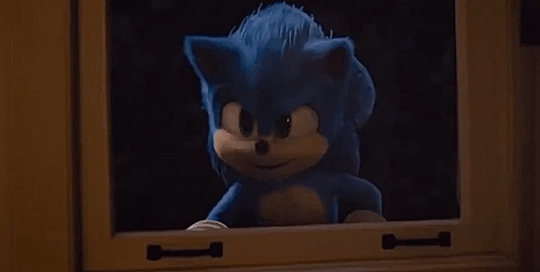
Sometimes, if they’re feeling adventurous, the three will camp out in the backyard in PJ’s, sleeping bags, and play movies on a projector that Tom set up on the patio. Ozzie will join them sometimes, but he prefers to stay indoors and make fun of the three when they get bug bites.
When superhero moves come out, such as The Avengers or Aquaman, the three will dress up as the main characters--Sonic tries all the time to dress up Ozzie, but Ozzie chews the costume up--and watch the film. They are also advised to talk and act like the character that they dress up as throughout the whole film. Sonic gets a big kick out of it.
Sonic loves to go to the movie theathre, though Tom and Maddie are very hesitant on doing so. Sonic loves to talk through the movie the whole time, as well as sneak in snacks from other stores in his spines to take out and eat during the film--he’s a noisy eater. He also likes to take movie posters home and hang them in his cave.
Once Sonic tried to get Tom and Maddie to watch some horror movies for Halloween. The two weren’t fond of the idea of watching a scary movie, but Sonic won them over with puppy dog eyes. Sonic didn’t last very long, he ended up rolled into a ball the whole time and slept with all the nightlights and lights on in his cave. He never begged to watch another scary movie again.
Tom, being the cool dad he is, introduced Sonic to Bill and Ted, thinking that he would enjoy the time travel and the rock and roll music behind it. To this day Sonic still tries to make his own time machine out of a cardboard box, gum, and chocolate pudding containers.

Sonic cries each time he watches Lilo and Stitch. Tom cries with him now understanding where Sonic comes from.
Ever since Tom and Maddie introduced him to The Matrix Trilogy, due to Keanue Reeves in it, Sonic loves to recreate the “slow motion” parts when the scenes play in the movie. Tom just loves to throw pillows at him because it’s funny when Sonic least expects it.
Sonic and Maddie love watching musicals.They love Footloose, Spider-Man (Broadway), Little Shop of Horrors, Hamilton, Rocky Horror Picture Show, School of Rock, Hairspray, The Return of Mary Poppins, and more. It’s their guilty pleasure since Tom loathes them.
Tom and Sonic love to binge-watch every type of Star Wars movie, spin off, and prequel there is. They’ll stay up for hours and nights watching it and pass out on the couch. They quote lines from the movie, pretend to use “the force” on each other, and they gush over Baby Yoda.
Sonic and Maddie binge-watch Parks and Rec and quote Jean Ralphio and Mona Lisa lines. (They love Ben the Schwartz).
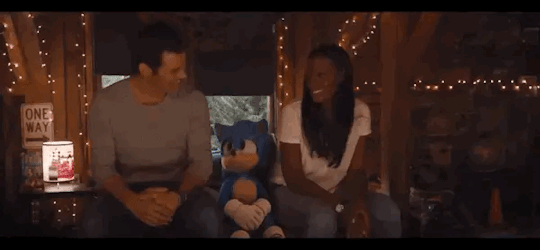
And finally, Sonic will snuggle close to them both during the movie and thank them for being with him before he falls asleep. Tom and Maddie usually get choked up when he thanks them, knowing that he watched from afar and wished to be with them. They thank him as well for being a wonderful son to them and for making them both whole again.
Good suggestion, my friend. Very good! Loved your idea very much! Stay safe for me, okay? You matter.
78 notes
·
View notes
Text
A List of Older Fandoms for Quarantine Viewing
I thought it might be fun to put out a list of older fandoms or smaller fandoms that might be of interest to folks here. As we’re all still stuck with quarantine, perhaps you’re looking for some new/old media? Perhaps this list could help?
This is halfway between a rec list and a charting of my own fandom history. For anyone looking for some new fandoms to check out that are various flavors of interesting and a little older, check ‘em out!
Feel free to add your own!
In no specific order (other than maybe my DVD shelf??)
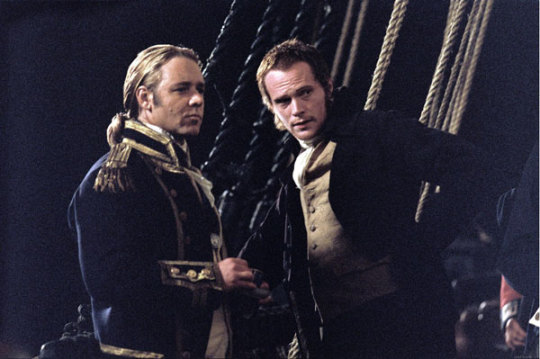
Patrick O’Brien books/Master and Commander - this was a fairly good-sized fandom back when the movie ‘Master and Commander’ came out. A must-watch for anyone who likes historical fiction, age of sail, and powerful homoeroticism.
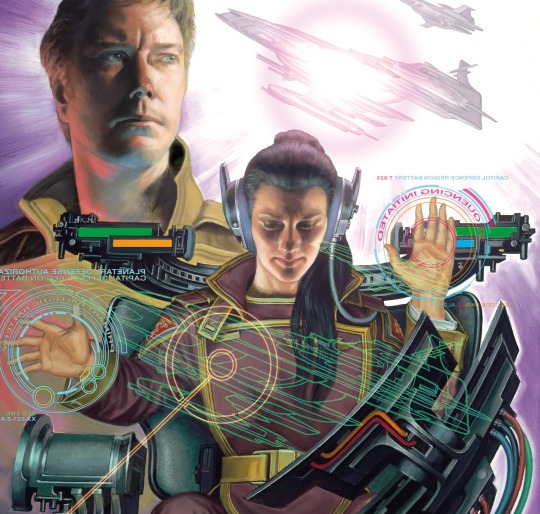
David Drake’s Royal Cinnabar Navy series - did you ever want Master and Commander in space, but Stephen Maturin is a librarian named Adele Mundy who is a sharpshooter and utterly terrifying and wonderful and beloved ace representation? Fair warning: this series contains grapic descriptions of violence from an author who’s still working through his Vietnam PTSD. Here be dragons.
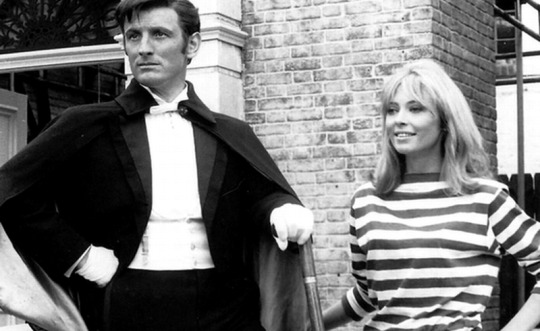
Adam Adamant Lives! - an Edwardian adventurer got frozen in a block of ice by his arch-nemesis The Face, thawed out in 1969, and now fights crime with a young woman sidekick and an actor-turned-butler who spouts limericks. It is a completely insane show and joyously dumb. Everyone involved is having a whale of a time. It’s hard to come by, but so worth watching it for the pure silliness.

Buffy the Vampire Slayer - I can’t believe this has become a fandom some people haven’t heard of, but here we are, far enough out from the massive cultural impact of Buffy that I need to remind folks. 1990s series about a cheerleader-turned-vampire slayer, struggling with both the supernatural and with high school (which is much worse).

Angel - spinoff of Buffy, and in some ways my preferred series? It has so many problems, and the writing of seasons 3 and 4 is quite weak, but the characters are strong, the stories are solid, and Alexis Denisof’s Wesley Wyndam-Pryce remains one of my favorite character arcs in television.

Marble Hornets - here’s another fandom that doesn’t feel like it should be old, but it’s now over a decade since its premiere. One of the early webseries, Marble Hornets is still one of the best. Well done horror with occasionally iffy amateur acting, easily overcome with a surprising touch for cinematography. I’m a sucker for amateur film, especially when it’s well done and ambitious.

Babylon 5 - This was the first fandom I posted about on here, and still one of my great loves. Arcs before arcs on television were a thing. Huge overarching stories playing out over seasons. Great political intrigue on a space station. The grandest, most tragic Shakespearean romance that ever played out between two middle-aged alien diplomats.
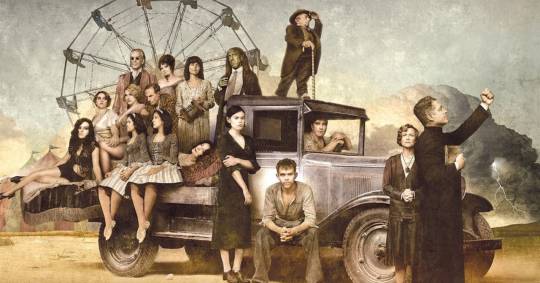
Carnivale - HBO prestige show before they had prestige shows. Bought the DVDs on the cover art alone, and they were so worth it: “1934. The Dustbowl. The last great age of magic.” Like most HBO shows, every possible content warning does probably apply to this show, though it’s not nearly as extreme as Game of Thrones, so if you could watch that, you can probably watch Carnivale.
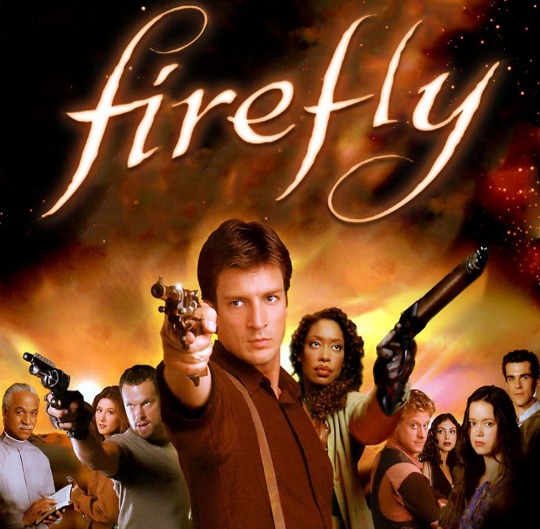
Firefly - space western courtesy of Joss Whedon. Only one series long, but really well done. Probably Whedon’s best work.
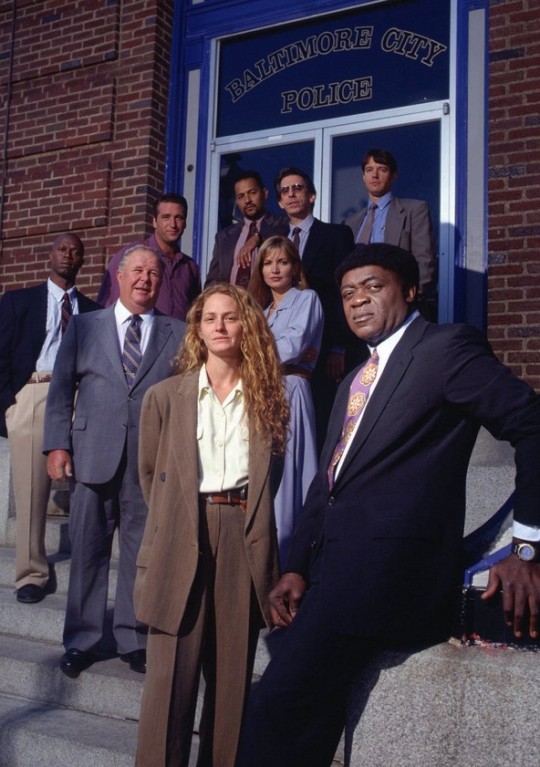
Homicide: Life on the Streets - early 1990s police procedural with a twist: it wanted to be a very accurate, realistic portrayal of a homicide unit, based on a documentary novel. The characters all feel real, you’re certain they all smell like cigarettes, coffee, and sweat. Also, can we applaud a show that has a female homicide detective who doesn’t wear makeup, has frizzy red hair, and never wears heels? Kay Howard is such a fantastic character. Frank Pembleton and Tim Bayliss and John Munch and Gee are all such wonderful, real characters. Another great show for prestige-television-before-it-existed.
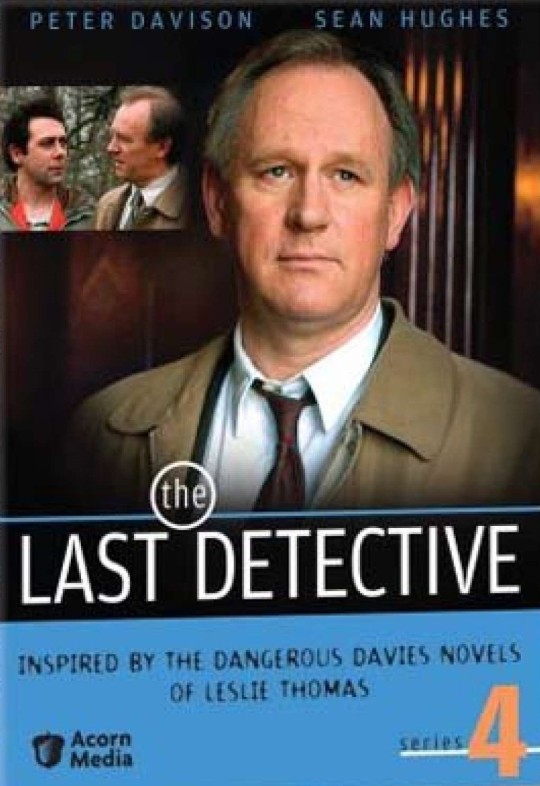
The Last Detective - British detective series about a detective who gets small, mournful cases ignored by everyone else and solves them mostly through dogged work rather than brilliance. This show is the most melancholy show I have ever seen, shockingly good in the quietest way possible, and remains one of my favorite detective series ever.
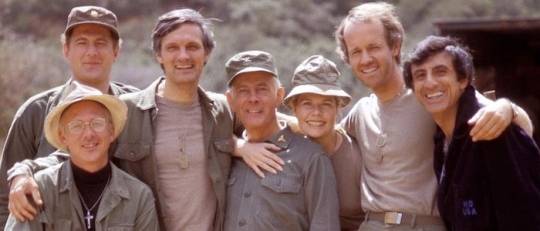
M*A*S*H - have you ever wanted a proper tragicomedy billed as a sitcom? There’s a reason this show is still considered the greatest sitcom ever made. Fair warning: the early seasons really haven’t aged well, and a lot of the comedy doesn’t land. But if you’re willing to stick with it to the later seasons, you’ll find a show that shifts toward one of the greatest tragicomedies ever.
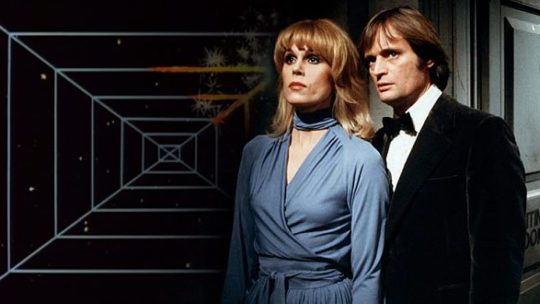
Sapphire and Steel - 1970s/1980s British horror/sci-fi show about two mysterious beings that appear to resolve science fiction reinterpretations of horror concepts. Despite a shoestring budget, the writing is phenomenal, and the acting is perfect, particularly the icy intimacy between the two leads, David McCallum and Joanna Lumley.
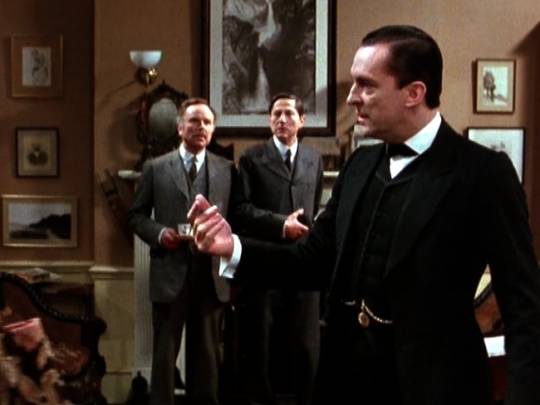
Sherlock Holmes - before the modern interpretations, there was the 1980s series starring Jeremy Brett. If you want the single most accurate interpretation of Conan Doyle’s work, with characters who feel and look like they’ve stepped off the page (and the series that singlehandedly rehabilitated the character of Inspector Lestrade), this series is a must-watch. This has been my go-to comfort viewing for years.
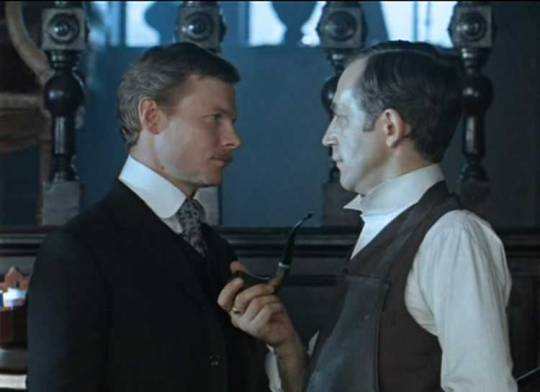
Also, if you’re a Sherlock Holmes nut, and you’re desperate for more content, and willing to navigate a Cyrillic DVD menu for subtitles, might I suggest the late 70s Russian Sherlock Holmes series? Vasiliy Livanov’s Holmes is such a different interpretation of the character, and he’s a delight. And Vitaliy Solomin’s Watson is possibly my favorite Watson ever. He’s so done with everything.
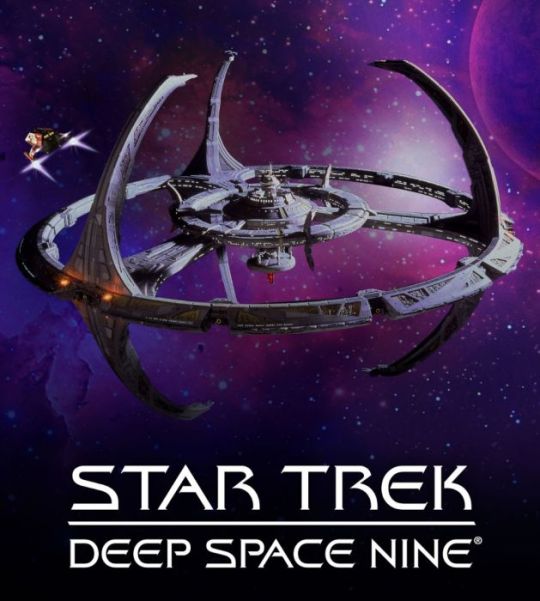
Star Trek: Deep Space Nine - sort of the forgotten middle child of the Star Trek series, but in many ways it’s one of the most ambitious. It was a rival/developed at the same time and somewhat by the same team as Babylon 5, so there are some striking similarities (space station, overarching stories, etc), but while B5 manages the political intrigue better, DS9 does a war better. It’s the darkest of the Star Trek series, investigating the more tarnished edges of the utopia. The characters are more deeply developed and flawed, and I love them all. Andrew Robinson’s portrayal of tailor-with-a-mysterious-past Garak is probably the best character Star Trek ever created in any series.
Hope those of you looking for new things to watch and dig into might find something in this list!
17 notes
·
View notes
Text
Setting, Genre, and Principles
I talked recently with a friend about Apocalypse World, genre, and Principles. For those unfamiliar, Principles are a design and game-running technique that Apocalypse World did not invent, but did refine and explicate, a bit like how the Greeks knew of static electricity, but it was Galvani who made a battery on purpose, that others could study. Since I haven't died yet, I have a project in mind, in this case one that really explicitly relies on Principles in its basic design, so in this essay I want to work out a basic edge of 'what Principles can cover'. Namely, the edge of 'genre'.
I'll define a couple technical terms here because I intend to use them pretty narrowly:
Diagetic means the usual, "bound within the world of a given story".
Commentative means "outside of any story, things we say about stories-generally".
So a setting counts as diagetic, bound within its own logic and the logic of the single work it appears in. Diagetically we'd ask "why does the author choose to write dragons in this way?"
A genre counts as commentative, not bound within any story. It may or may not codify some stories, an author might consciously bend to or defy a genre as they understand it, but most importantly on the genre level, we don't ask "why did the author write dragons like this?" Instead we ask "why do people-generally like to see dragons?"
In talking with that friend, she said she had difficulty reading AW, which I can't really fault anyone for: I'd consider AW almost as much a polemic manifesto as a procedural manual. And the former undermines the latter. Part of her issue came from her looking for a setting, not realizing that properly speaking, AW doesn't have one. I said as much, and as we talked, I then said a lot more than I should:
After confirming that "Baker does not give AW a setting", in a bit of enthusiasm on the idea of 'genre emulation', I went on to say that "Baker gives his apocalypse". This prompted confusion, for the reasonable question arises, "how can Baker provide his own, particular, post-apocalypse story without giving a setting?" So I should have spoken more carefully, and I wrote most of this essay to over-answer that question for my friend. I've massaged it into its current form, for you non-her readers, in hopes that it helps someone, or if nothing else I can refer back to it as I clarify my own cranky lit-game-dev ideas.
To me, 'a setting' goes like this:
DnD has a kind of proto-setting, it has dragons like-so, it has elves who look pretty and live in the woods, it has dwarves who look TV-ugly and live in the mountains, it has orcs who look ugly-ugly and live in the wastes, it has humans it treats as default and live wherever. It has vague gestures of settler-colonial race-relations but not enough anything to explore, unless you the reader put it there. DnD doesn't really have much of a genre more specific than "uh, generally sword-and-sorcery fantasy".
Shadowrun has basically the same things, and a specific setting: neoliberal dystopia and collapse of the state, but otherwise 'basically our world'.
But more than that, Shadowrun also--for its many faults--has a commentative-sense genre: in Shadowrun, might makes right (or at least right-now); money rules everything, except maybe loyalty; it treats magic as innately cool and natural but technology as evil and you maybe would better die than get an artificial heart. These story-contours don't care at all about where things happen or what institutions exist.
To take another example, Cowboy Bebop tells a solid noir western story set in space. The fact that it takes place in space ultimately matters very little to the 'western' or 'noir', though. Spike knows he lives in space, and he'd agree that--to someone alive in our world today--he lives in a sci-fi story. He doesn't know that he got cast as a western-revenge-fable protagonist (though he might agree if someone asked). He definitely doesn't know that he has a corner of the story that goes more-western, while Jet lives in a corner of the story that goes more-noir.
If you wanted, you could tell Cowboy Bebop beat for beat, almost unedited, as a straight-faced noir western. Instead of Jet's main ship they have a wagon, the individual bounty-hunters have their own horses, Ed does something weird with telegraphs and adding-machines. Instead of vacuum between planets of our solar system, they weather the desert waste between far-flung towns. It would remain a story about revenge, losing oneself, finding oneself, remaking oneself, and the things we have to do for the people we love, and what happens when we don't.
You could not do this and also remove the noir, or the western, those define the kind-of-story. If you left it in space but took out the noir, entire episodes of moral ambiguity would disappear (like Ganymede Elegy). Likewise taking out the western, the premise of bounty-hunters wouldn't fit and couldn't stay. I would even go further, and say that while I don't mind Cowboy Bebop sitting on the 'sci-fi' shelf so that consumers can find it, I wouldn't class Cowboy Bebop as sci-fi. A masterpiece, but not sci-fi. Because I think that as a genre, the core of sci-fi asks "where are we going, and what will we do when we get there?" Cowboy Bebop does not care to ask this question, it cares about the human condition right now, and what people right now will do. It takes place in space because space is cool.
Second hot take: Kafka's The Castle counts as sci-fi, by the above conception. Extremely, disturbingly prescient sci-fi, precisely predicting things from call-centers to Big Data and the professional managerial class, and warning of the ease with which a competent, level-headed, and well-meaning person can confront The Machine, and The Machine will completely hollow out and dehumanize them, rob them of every competence and agency, until The Machine no longer notices them as a foreign object.
No one would put The Castle on the sci-fi shelf, because it has no shiny labcoat SCIENCE![tm], telephones and typewriters show up as cutting-edge in the setting. But just look at the concept of tracking, monitoring, filing, and refiling, and bureaucratic shuffle and managerial maladaption and "not my department" and "oh you have to fill out a form 204B -> well file a form AV-8 to requisition a 204B -> look do I have to do everything for you, I'm a busy cog you know". Look at that concept as a technology, like Kafka did.
The story explicitly refers to this as innovation, as a deliberate thing that the Count and his bureaucrats did, on purpose, with intent and expected effect. The Castle explores social science, political technology. And Kafka rigorously explores its psychic effects on the subjects, more thoroughly than Gibson waxing poetic about VR headsets and the Matrix. The Castle qualifies as fiction about science, where we're going and what we'll (have to) do when we get there. It takes place in a quaint provincial village that might lie somewhere in Bohemia in the very early 20th century.
So I allege that while setting matters for writing a given story, it doesn't matter a lot for kind-of story. And in my conversation with my friend, I should have sensed the kernel I could have dug out, but instead, I wrote the rest of this essay, particular to post-apocalyptic genre fiction, and germane to Apocalypse World.
Bringing this back to apocalypsii:
In the Australian outback in the late-70s, the gas supply all but disappears, causing societal collapse and civil breakdown.
In the American midwest, an unspecified disaster wipes out communications and supply-lines, causing survivors to turn feral and cannibalistic.
In New York in the late 60s, food shortages and overpopulation cause the government to criminalize almost everything so that they can grind people up into food.
These are settings in the sense that I mean: a place, a time, implicit societal structures and institutions, "where is this, what world is this, what is here?" DnD's setting doesn't have much of a 'where' but it more or less assumes "uh, Earth kinda, sorta"; Shadowrun says "literally Earth but N years after magic becomes real and also DnD races". But the above three post-apoc settings have very different everything-else: if you were making a post-apoc section of a library and wanted to break down into sub-genre, you'd want to put the three works above on different aisles.
Mad Max tells a story where holding on to old power structures is complicated, sometimes good, sometimes bad, and it emphatically matters how we go about doing it: when marauding punks kill your family, you may justifiably go and kill them back; but when a power-mad warlord inflicts his brutal regime, you owe him no allegiance.
The Road tells a story where everything we care about can just blow away in the wind, and at best we can only cling to what we cherish, while we can. Power comes and goes, structures don't last, but cruelty and misery endure eternal and will always win--but we try anyway.
Soylent Green tells a story where societal structures can technically endure, but themselves have no moral compass and can inflict as much cruelty as uncaring nature. You may live in an illusion in which civilization appears to function, but in fact you have no more safety than the wilderness, and indeed you didn't realize it, but you're the cannibals, and perhaps soon the meal.
Those considerations all sit at the genre-type, commentative level, and I class them as wholly unconcerned with setting. Each of these stories would tell just as well in space, or an underground complex, or even Bronze-Age Fertile Crescent if you twist a few narrative arms. The where and when and what doesn't define or determine the kind of story, the genre, even if setting can help or hinder genre goals.
Bringing this back to Baker: he doesn't give a place where things happen; he doesn't give an inciting event that brought the apocalypse; he doesn't even describe what happened during the apocalypse, or how long ago it happened, or give a date for "today". I'll list three AW settings I've run or played in or heard about:
Sunlight vanished altogether, though somehow it hasn't gotten any colder. Darkness and shadow can become animate and even sapient, and can claim people, though it doesn't seem exactly malevolent or 'evil'. Rule of law has mostly fallen apart, but out of fear and prudence people mostly avoid wanton violence, because if you see someone you don't like, you could roll up on them and take their stuff--but just as easily they could kill you, and just as easily as either, the Dark might just take both of you; you're safer keeping the Dark at bay and not hassling someone else, unless you've got good reason.
A few years(?) ago, survivors woke up from total amnesia and some kind of fugue: it seems like this fugue lasted at least some years, there's some decay of modern-to-us structures, but the ruins look fully recognizable and often quite well-preserved. But signs abound, literally painted twenty-feet-high on buildings and structures, that something unfathomable happened. The giant wordless pictograms seem to warn to protect tools and structures, to stay together and not go off alone, indicate places that once had lots of food or other important resources, and most alarmingly they show gigantic hands reaching down from above onto some of the pictogram figures. No one can remember anything from before the wakeup though, so the meaning is lost.
Something like twenty years ago, the world broke in some fundamental way: it always rains or at least fog abounds, long-distance communication inexplicably but insurmountably fails to work, and cityscape has sprawled on its own to incorporate seemingly the entire world. As far as anyone knows, the city spans infinitely in every direction, it has no edge, only more city. The city-cancer seems waterlogged and rotting everywhere, some few places fit for use and occupancy, but if you go down any given street and step inside an empty house or shop, it probably won't suit human habitation. People still habitually carry on the forms and outlines of societal norms, mostly, because what else can they do? You can't burn it all down as long as it keeps raining.
I brought these up because Baker's conception of 'post-apoc' does not cover the whole of "all post-apocalyptic literature"--it couldn't, shouldn't, and if it did it would have little or no use to anyone. Baker's narrower conception, the Principles that AW's rules expect a setting to follow, narrow things down and keep the rules crisp, tight, and tractable.
Each of the AW campaigns above has a totally different setting, aiming in totally different directions for different things--but, they all live inside Baker's Principles for a post-apoc that fits within AW: scarcity, weak but present society and norms, a Before, an After, and no going back, and each has a 'Psychic Maelstrom' that excuses a lot of narrative fiat and deus ex machina and having characters just do weirdness not otherwise specified.
That 'Psychic Maelstrom' comes closest to giving what I'd call "a setting" as in "place, time, institutions", because it sits at the diagetic level. A distinct thing bound within a given story--except it only barely counts as 'diagetic'. Because Baker only gives loose guidelines for what a Psychic Maelstrom should be or do. Baker's own at-his-table Psychic Maelstrom will look nothing like mine, or my girlfriend's, or her erstwhile friend's, because in those three AW settings up there, each of us had totally different ideas for what to do with a Psychic Maelstrom in a post-apocalyptic setting.
But: all three of us used our Psychic Maelstroms for the things Baker says to use them for: unleash weirdness, justify unrealistic but narratively satisfying twists, allow and excuse extra awesomeness, maybe use as a metaphor or allegory for "how it got this way", as well as "where it could go", in literary terms. And . . . Baker doesn't really get closer than this, to giving "place, time, institutions, history and people and events". So in the sense I understand 'setting', a diagetic construct within a given story, AW doesn't have one.
But in the commentative genre sense, AW very definitely gives Baker's apocalypse, in that it gives a recipe for the things that Baker considers essential to the post-apoc genre (or at least, the aisle of the post-apoc library he wants to confine his game to). He doesn't try to tell a Soylent Green apocalypse so much--you'd need to twist some arms and ignore some Principles to tell Soylent Green. Nor does he try to tell Children of Men so much--you'd have to leave a lot out to rein AW in to just Children of Men. He instead aims* for something closer to Mad Max, but heavy on Weird West, and a lot less somber and desolate, so more like Fury Road. And he says, "here's how:".
(*) But, of course, he doesn't actually tell these stories. Instead he has the project of telling the reader how to tell this kind-of story. So, while he gives some sample poetic images of skylines on fire and the world torn asunder, he doesn't care to talk about the virus, or the metorite, or the gas-shortage or the food-shortage. He doesn't care about the where or when or what, and even with the Psychic Maelstrom, the one concrete diagetic thing he gives--it sits there as a meta-thing, explicitly unstated whether it resulted from The Apocalypse or its inciting event, or caused it as the inciting event, or something else.
All of which boils down to: commentative, about-stories, genre-level stuff owns bones, and I weigh it heavier than diagetic, in-stories, setting-level stuff. Baker gives excellent tools, within his purple polemic prose, for that first stuff and gives little or nothing for the second.
2 notes
·
View notes
Note
What gothic novel(la)'s would you suggest for someone who's not keen on horror or purple prose but loves the feel of GDT's works and wants more like that, just in written form (not unlike the novelisations of Crimson Peak or Shape of Water)?
Okay well first of all you need to go get a copy of Her Body And Other Parties. A collection of short stories based around common urban legends but through a feminist lens.
The Merry Spinster, the stories herein are based on Daniel Lavery’s children’s stories made disturbing series. Some real gems here.
White Is For Witching is a story of a multi-generational family that starts to go through some strange shit when the mother dies. Family, magic, and labyrinthine houses. Very much in your wheelhouse.
The Bloody Chamber, this is my favorite book of all books. It’s a series of gothic psycho-sexual fairy tales. The most purple of prose, so you have to be okay with that.
Though The Woods, this is probably my second favorite book of all books. More gothic fairy tale type stories. Emily Carroll also has an incredible grasp of graphic and pacing. One of my favorite artists.
When I Arrived At The Castle, another Carroll book, my favorite book of 2019. This one is rather more surreal. Very much reminds me of Crimson Peak in tone but not story. Beautiful, bloody, and gay.
Pretty Deadly follows Death’s daughter through time. First story arc is in the old West (as in an Americna Western), second is in WWI. One of the most beautiful comics around.
Injection is about a created intelligence made to bring about the future. Five brilliant people came together to make this intelligence through science and magic. A beautiful combination of fantasy and sci-fi. One of my favorite comics.
The Girl From The Other Side is set in a fantasy world split between civilization and wilderness. The latter is filled with demons who spread their condition through touch. But one day a small girl is found living there under the guardianship of one of the demons.
The Kurosagi Corpse Delivery Service is about five recent college grads who can’t find jobs so they decide to talk to the dead instead. Frightening, funny, and always an absolute delight.
The Sandman is one I imagine you already know, but just in case here it is. While rather flawed this remains one of my favorites. The lord of Dreams is kidnapped for 70 years, when he comes out everything has changed. The Sandman follows him as he tried to regain his place in the world.
Another title of which you’re probably already aware is From Hell. This is the book that made Alan Moore a magician and is, in my opinion, his best work. The story of the Whitechapel murders
As always you don’t have to buy these from me, but for the love of any and everything you consider holy, please please please don’t buy from Amazon.
Alright if anyone wants their own recommendations just pop by my inbox and tell me a bit about what you like to read. What with the plague I’m out of practice handselling and could use the practice.
4 notes
·
View notes
Text
Reviews 348: Expositions
I came to the music of Reuben Smith through Balearic Social Records, who included “Venezuela” on the Sola various artists EP back in 2017. Released under the name Calle Gravina, the song was a total revelation and saw tropical mallet instrumentation dancing alongside big bottomed synth basslines, beachside downbeats, and psychedelic wah licks while equatorial synthesizers fluttered on a seabreeze. And best off all, the track featured a truly jawdropping “Na Na Na” chorus that truly must be heard to be believed, for so powerful is its effect that words simply fail me. In the time since the release of “Venezuela,” I’ve often dreamed about more music from Reuben and finally, after three years of waiting, my patience has been rewarded in ways I couldn’t have imagined, for the artist is making a big splash in 2020 via a new project named Expositions. The first release from Expositions and the focus of this review is the Yellow Haze EP, which was recently put out by the ever-amazing Forest Jams, a label that never fails to blow me away and who I last checked in with via the California coastal psychedelia of Starving Daughters. Here, the pairing between label and artist couldn’t be more sympathetic, for across the EP’s four tracks, Reuben moves smoothly between sunset downtempo, island life dubfunk, slow motion boogie, and seaside fusion, as subsonic basslines slide sensually, synthesizers fall like a summer storm of gemstones, shakers and tambourines add touches of beachdance swing, solar space leads swim in stoner splendor, palm-muted echo riffs dance on sunbeams, and fat bottomed balearic beats guide the body through exotica bongo and conga tapestries. And in crucial moments of soulful pop euphoria, a vocalist named Hanna delivers delirium diva incantations awash in an Ibizan chill-out dreamhaze...her voice sometimes joining Reuben’s for dopamine hooks, while at other times floating off into the ether.
As well, I’d like to briefly discuss the second Expositions EP Nights at Casa Ana, which is already in the works via a Qrates crowdfunding campaign found here. I encourage readers of this blog to back the pressing if possible, as the release is truly special and deserves its place on wax. Moreover, Nights at Casa Ana sees the welcome return of the aforementioned Balearic Social Records, a favorite label of mine that has been lying low since 2018’s Nyala split EP between Bonnie & Klein and BlackBush Orchestra. Though Nights at Casa Ana still revels in familiar vibes of sunshine positivity and oceanic radiance, the EP sees Reuben moving slightly away from downtempo pop towards fever dream fantasies and drug-induced paradises, which is nowhere more apparent than on the near 15 minute “Energía Mística.” The track is a slowed seaside disco epic, featuring nimble funk basslines, kaleidoscopic guitar refractions, blissful fusion leads, layers of solar squelch, fourth world dub electronics, acid fuzz space solos, and snippets of spoken Spanish flowing in and out of birdsong…the whole thing comprising a journey in extended balearic jamming only rivaled by Max Essa’s “Panoramic Suite.” As for the other two tracks, we are treated to shorter, though no less expansive adventures, both featuring acid house bassline percolations and further trippy Spanish spoken word sampling. “Misteriosi” sets a filmic dancefloor gallop beneath jangling western guitars, sea-crystal melodies, mellotronic prog flutes, sci-fi synth leads, chanted breaths, and layers of extasy laughter while in “Tomate tu tiempo,” machine beats lock into a samba-esque swing, AOR guitars ride a warming summer wind, marimba fractals surround woodwind lullabies, soulful chords stoke vibes of 70s disco intoxication, and starbeam fusion solos dance through layers of seaspray while neon-hued acid tracers fire gently across the mind.
Expositions - Yellow Haze (Forest Jams, 2020)
Shakers and sonar sequencers set the stage in “Get With You” before cutting away to slinky bass guitar riffage and a slow motion balearic breakbeat, with touches of boom bap kissing the rhythmic flow. Static textures swoosh around smooth Rhodes riffs as the basslines hit ever heavier and high in the sky, synthesizers radiate Italo fusion lullabies and new age starscapes amidst cooing vocal accents. After a drum fill eruption, we drop into paradise pop intoxication, with Reuben’s and Hanna’s hazy vocal hooks trailed by soulful Rhodes chord flourishes…the whole thing like a supremely stoned out _Moon Safari-_era Air cut. Underneath, tapped rides shake out golden glitter, snares crack on the beat, and basslines execute funky octave walks while later, after a brief cut into dreamhouse pianos and slow motion disco drums, a run down the ivories ushers in a symphonic paradise climax awash in pads that breath like celestial ether. Then, following another delirium chorus accented by tambourine jangles and liquid wah wah gurgles that flutter outwards in every direction, the track ends with synth solo dazzlement, as laserlight runs ascend on ocean-filtered sunbeams amidst mechanized ride bells, swinging shaker hypnotics, crashing cymbals, and Hanna’s ethereal vocal shadowspells. “Rollerskates” follows with its spaceage harpsichord/steel pan synths layering a rainfall of percussive ocean crystal over shakers and robotic slapbass weirdness. As the groove drops in, we find ourselves in a broken beat dub out, with hi-hats spitting fire on a skanking riddim, lofi snares popping off the beat, and layers of angel starlight and nacreous vocal chaos swirling all around. It’s a doped out boogie beat groover in the style of A Vision of Panorama, wherein crystalline keyboard chords and Carribean steel leads swim through rainbow gases, low down vocal drones filter into cut-up trance euphoria, and meditative whistle tones ensnare the mind. After a quick drop, snare fills bring back the jam, which now seems to squiggle and shimmer with an almost nervous sense of energy, and as the rhythms continue pulling in and out, pianos scat out blues-tinged reggae riffs amidst gaseous bodies of choral star magic. And as the futuristic harpsichords and synthetic island idiophones continue bouncing alongside the dubwise boogie rhythms, one can easily imagine a boardwalk scene where myriad skaters glide graciously beneath a shining sun.
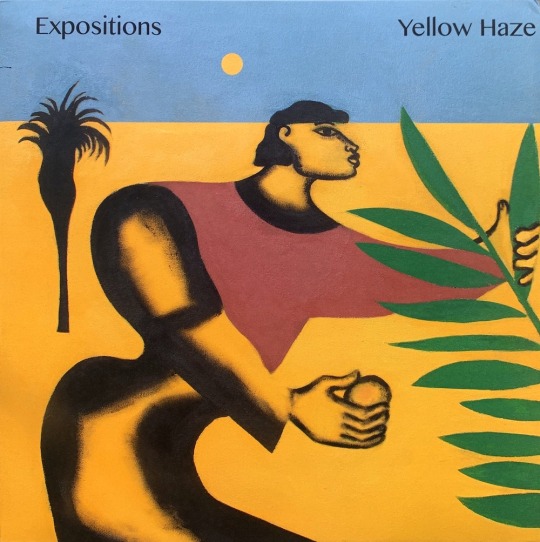
In “Sun Shine Down,” galactic pads swirl amidst crashing waves as hand drums hint at a blossoming beat. Then comes the groove proper, wherein distorted basslines generate huge wavesfronts of subsonic romance, tick-tock cymbals move around pounding kicks and cracking snares, and Hanna sings spells of shadowy wonderment…her lyrical phrases and wordless extasy reveries calling to mind Cathy Battistessa’s work with balearic masters such as Afterlife and Blank & Jones. At certain moments, feedback synths evoking both seagulls and diamond sparkles melt over the mix while piano chords hit like neon liquid. Elsewhere, during understated climaxes, these amazing polysynth melodies start descending…as if discretized pulses of psychedelic starlight are dancing across a sunset sky. All throughout, massive basslines slide with a fluid grace, bongos blow in on a coastal breeze, and hissing cymbals open up into heatwave blasts, with heady rhythmic drop stoking vibes of anticipation. And as the the track ends, a blazing fusion synth solo works into the stereo field…slow and sensual…with trippy modulation wiggles interspersing the paradise glide. Yellow Haze ends with “Holding On,” which drops into a bottom heavy heroin groove seeing palm-muted echo guitars moving lackadaisically over a dubfunk pulse. Basslines hit low before sliding high, shakers and cymbals guide the body, and tropical hand percussions spread out as Hanna executes dazzling soul diva reveries, with her voice occasionally trailed by coral-colored synth harmonizations. A towering tom fill cuts the groove down to tapped rides, spitting hats, and pooling bodies of liquid synthesis while later, as the kick, snare, and bass synths slam the body into oblivion, wah wah electronics spread outwards into a ghostly sea haze while e-pianos communicate with dolphins and whales. During a magnificent synthesizer solo, bluesy fusion leads filter and bend as the basslines move in tandem with the beats…the vibe bleary eyed and stoned out before reducing to a Floydian pulse, one overplayed by strange bell-tone cacophonies. Building back, tambourines jangle and guitars generate psychosonic dub lick and echo-morphing funk riffs beneath a cascade of vocal starlight before the downtempo body groove finally slams back in, with the stereo field now overflowing with wavering webs of crystallized vibrato while Italo-style squelch leads seek out the sun.
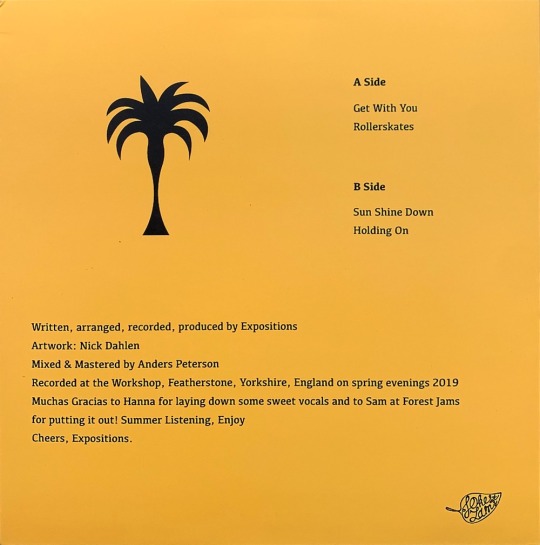
(images from my personal copy)
#expositions#reuben smith#hanna#calle gravina#balearic social#balearic social records#andy pye#outlaws yacht club#balearic#balearic beat#yellow haze#forest jams#seaside pop#fusion#funk#dub#boogie#rollerskating#tropical#equatorial#magical#narcotic#blissed out#summer listening#artwork by#nick dahlen#album reviews#vinyl reviews#music reviews#vinyl
4 notes
·
View notes